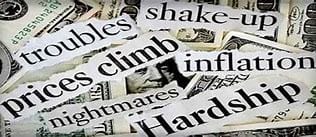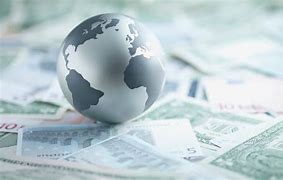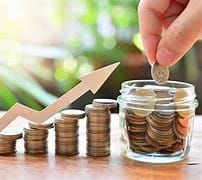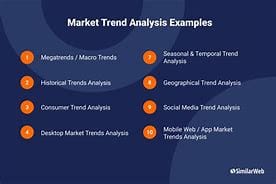Global Economy in Turmoil


The world’s economy, once a bustling marketplace, now resembles a stormy sea. The global economy, it’s been thrown into chaos. This upheaval is fueled by a volatile mix of factors , from the ongoing war in Ukraine to persistent inflation, & soaring energy prices, to lingering pandemic effects. A perfect storm of these issues has put strain on nations around the world, resulting in increased poverty, food insecurity, and economic stagnation in several regions. The uncertainty surrounding the global economic outlook leaves businesses, investors, & ordinary citizens questioning the future. How did we get here, and what can be done to navigate this turbulent landscape ? The world’s economies are intricately connected, & disruptions in one area can have ripple effects across the globe, highlighting the interconnectedness of our world. The implications of this current economic downturn are far-reaching , affecting everyday lives, investment strategies, & geopolitical dynamics. What’s next for the global economy? Can it weather the storm and chart a path to recovery? This article aims to delve into the key challenges and potential solutions, offering insights for better understanding the complex and volatile global economic landscape. So , strap yourselves in , because it’s a rough ride ahead.
Global Economy in Turmoil: Navigating Uncertainty and Finding Stability
The world is facing a complex and interconnected web of economic challenges. The global economy is in turmoil, marked by global uncertainty and economic turmoil that affects individuals, businesses, and governments alike. Understanding the forces at play is crucial to navigating this complex landscape and finding stability.
What is the Global Economy?
The global economy encompasses the interconnected web of national economies, markets, and financial systems around the world. It is a dynamic system driven by trade, investment, and the flow of goods, services, and capital across borders.
Defining the Global Economy: What makes up the interconnected web of nations and their markets?
The global economy is a complex system composed of many interconnected parts:
- International Trade: The exchange of goods and services between nations, driving economic growth and specialization.
- Foreign Direct Investment: Investments made by companies in one country to acquire assets or establish operations in another.
- Financial Markets: Global networks facilitating the exchange of capital, including stocks, bonds, and currencies.
- International Organizations: Institutions like the World Trade Organization (WTO) and the International Monetary Fund (IMF) regulate and promote global economic cooperation.
Key Players: Understanding the major economic powers and their influence.
The global economy is shaped by the actions of major economic powers, including:
- The United States: The world’s largest economy, with significant influence on global trade, finance, and technology.
- China: A rapidly growing economy, increasingly influential in global trade and manufacturing.
- The European Union: A bloc of European nations with significant economic and political power.
- Japan: A leading economic and technological power, with a strong manufacturing sector.
Interdependence and Integration: How are economies linked, and what are the implications?
The increasing interconnectedness of national economies has significant implications:
- Globalization: The interconnectedness of economies and societies through trade, technology, and cultural exchange.
- Supply Chain Integration: Global production processes rely on interconnected supply chains, making economies vulnerable to disruptions.
- Financial Interdependence: Financial crises in one region can quickly spread to others due to global financial markets.
Economic Turmoil: Causes and Symptoms
The current economic turmoil is driven by a confluence of factors, creating a “perfect storm” of challenges:
The "Perfect Storm": Identifying the multiple factors contributing to the current economic turbulence.
- Inflation: Rising prices for goods and services, fueled by supply chain disruptions, high demand, and government stimulus measures.
- Rising Interest Rates: Central banks are raising interest rates to combat inflation, increasing borrowing costs for businesses and consumers.
- Supply Chain Disruptions: The COVID-19 pandemic and geopolitical tensions have led to global bottlenecks, impacting production and trade.
- Geopolitical Tensions: Conflicts, sanctions, and trade wars disrupt global trade and financial markets, creating uncertainty and instability.
- Energy Crisis: The war in Ukraine and other geopolitical events have driven up energy prices, impacting households and industries worldwide.
- Climate Change: The long-term threat of climate change poses significant risks to global economies and economic stability, with increasing extreme weather events and rising sea levels.
Inflation and Its Impact: High prices, rising interest rates, and their effect on consumers and businesses.
High inflation erodes purchasing power, making it harder for consumers to afford essential goods and services. It also forces businesses to raise prices, potentially leading to a cycle of rising inflation. Rising interest rates can further exacerbate the situation, increasing the cost of borrowing and potentially slowing economic growth.
Supply Chain Disruptions: Global bottlenecks and their consequences for production and trade.
Supply chain disruptions have led to shortages of essential goods, pushing prices higher and causing production delays. These disruptions impact businesses across sectors, from manufacturing to retail, and can contribute to inflation and economic instability.
Geopolitical Tensions: Conflicts and sanctions impacting global trade and financial markets.
Conflicts and sanctions disrupt global trade, increase uncertainty, and can lead to financial market volatility. These tensions also fuel inflation and contribute to economic instability.
Energy Crisis: The impact of rising energy prices on households and industries.
Rising energy prices impact households and businesses, increasing costs and reducing purchasing power. This can lead to lower consumer spending and slower economic growth.
Climate Change: The long-term threat to global economies and economic stability.
Climate change is a long-term threat to global economies, posing risks through extreme weather events, rising sea levels, and disruptions to agricultural production. These impacts can lead to displacement, economic instability, and increased inequality.
Navigating the Uncertainty: Strategies for Individuals and Businesses
Individuals and businesses need to adapt their strategies to navigate the current economic turmoil:
Understanding the Risks: Identifying potential threats and vulnerabilities to your personal and professional life.
- Economic Downturn: Recessions can lead to job losses, reduced income, and financial hardship.
- Inflation: Rising prices can erode purchasing power and reduce living standards.
- Geopolitical Instability: Conflicts and sanctions can disrupt trade and financial markets, impacting businesses and investments.
- Climate Change: Extreme weather events and other climate-related risks can damage property and infrastructure.
Building a Strong Financial Foundation: Tips for managing your finances during turbulent times.
- Budgeting: Create a detailed budget and track your expenses to control spending and save money.
- Emergency Fund: Build a savings cushion to cover unexpected expenses.
- Debt Management: Pay down high-interest debt to reduce financial burdens.
- Diversification: Spread your investments across different asset classes to mitigate risk.
Diversifying Investments: Spreading your assets to mitigate risk and maximize returns.
- Stocks: Consider investing in a mix of stocks, including those in different industries and sectors.
- Bonds: Bonds offer relatively stable returns and can provide a hedge against inflation.
- Real Estate: Real estate can provide diversification and potential for long-term growth.
- Precious Metals: Gold and silver can act as a safe haven asset during times of uncertainty.
Adapting to Change: Embracing flexibility and resilience in the face of market fluctuations.
- Develop New Skills: Invest in training and education to stay competitive and adapt to changing market demands.
- Embrace Technology: Utilize digital tools and platforms to enhance productivity, communication, and efficiency.
- Seek New Opportunities: Explore new markets, products, and services to stay ahead of the curve.
Seeking Professional Guidance: When to consult financial advisors and experts.
- Financial Planning: Consult with a financial advisor to develop a personalized financial plan.
- Investment Advice: Seek guidance from investment professionals to make informed investment decisions.
- Legal Counsel: Consult with lawyers to navigate complex legal issues related to business or finances.
The Global Economy's Future: Challenges and Opportunities
The global economy is facing a period of significant change and uncertainty. But amidst the challenges, there are also opportunities for growth and innovation:
Rethinking Globalization: Exploring the potential for regionalization and reshoring of production.
The current economic turmoil has led to calls for a rethinking of globalization. Some argue for greater regionalization of trade and production, while others advocate for reshoring manufacturing to reduce reliance on global supply chains.
The Rise of Emerging Markets: The impact of developing economies on the global landscape.
Emerging markets are playing an increasingly important role in the global economy. These countries offer opportunities for growth, investment, and innovation. However, they also face challenges, including poverty, inequality, and environmental degradation.
Technological Innovation: Harnessing technology for sustainable growth and economic transformation.
Technological innovation has the potential to drive sustainable economic growth and address global challenges. This includes advancements in artificial intelligence, renewable energy, and biotechnology.
Sustainable Development: Balancing economic growth with environmental and social considerations.
Sustainable development is crucial for long-term economic stability. It requires balancing economic growth with environmental protection and social equity. This includes addressing climate change, promoting inclusive growth, and reducing inequality.
Conclusion: Finding Stability in a Turbulent World
The global economy is in a state of flux, facing a complex interplay of challenges. However, by understanding the forces at play and adapting our strategies, we can navigate the uncertainty and find stability.
Staying Informed: The importance of staying updated on global economic developments.
Staying informed about global economic developments is essential for making informed decisions. This includes reading news articles, analyzing economic data, and consulting with experts.
Building Resilience: Adapting your approach to thrive in a dynamic environment.
Building resilience is key to navigating economic turbulence. This involves developing flexible strategies, embracing change, and investing in continuous learning.
Embracing Opportunity: Seizing new possibilities amidst uncertainty.
Amidst the uncertainty, there are also opportunities for growth and innovation. By embracing change, seeking new possibilities, and staying adaptable, we can find success in a turbulent world.


